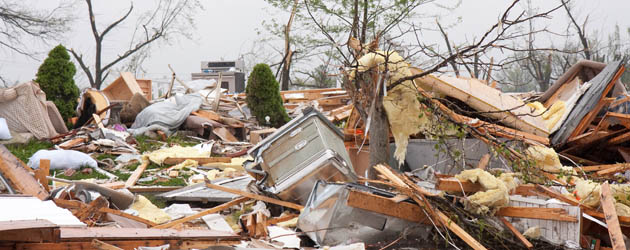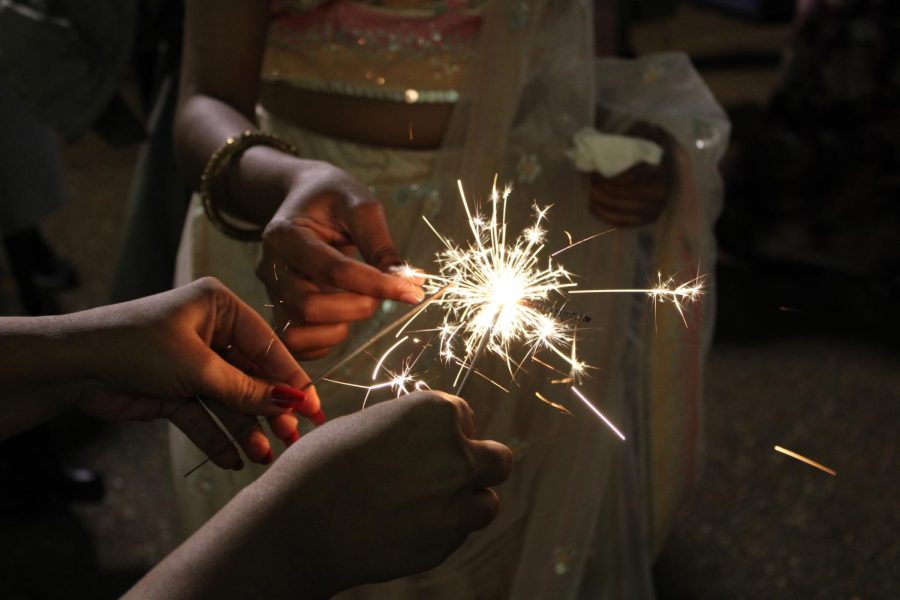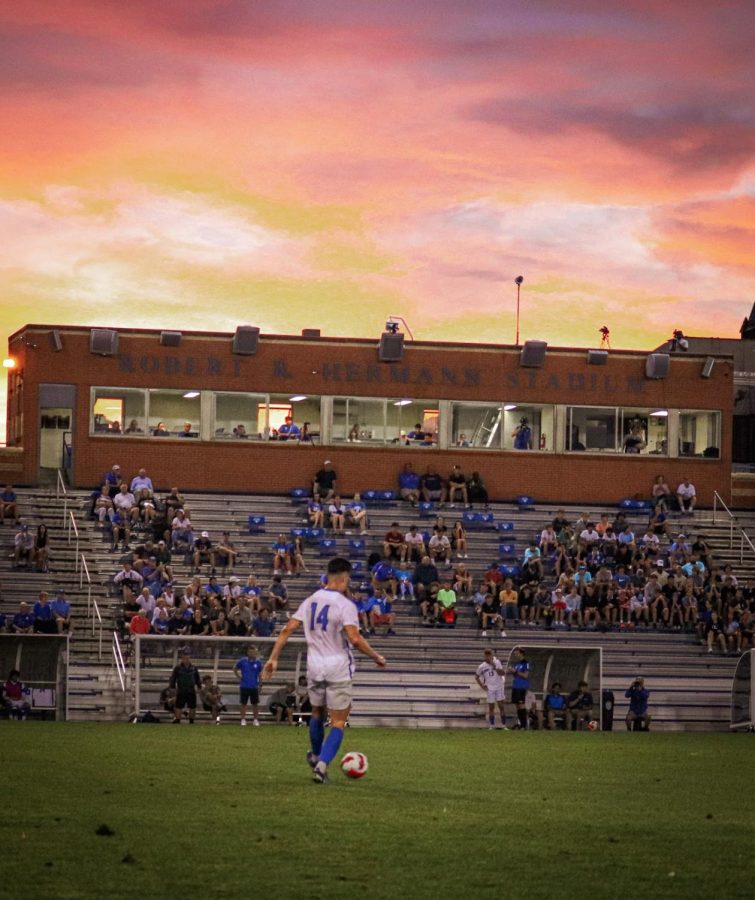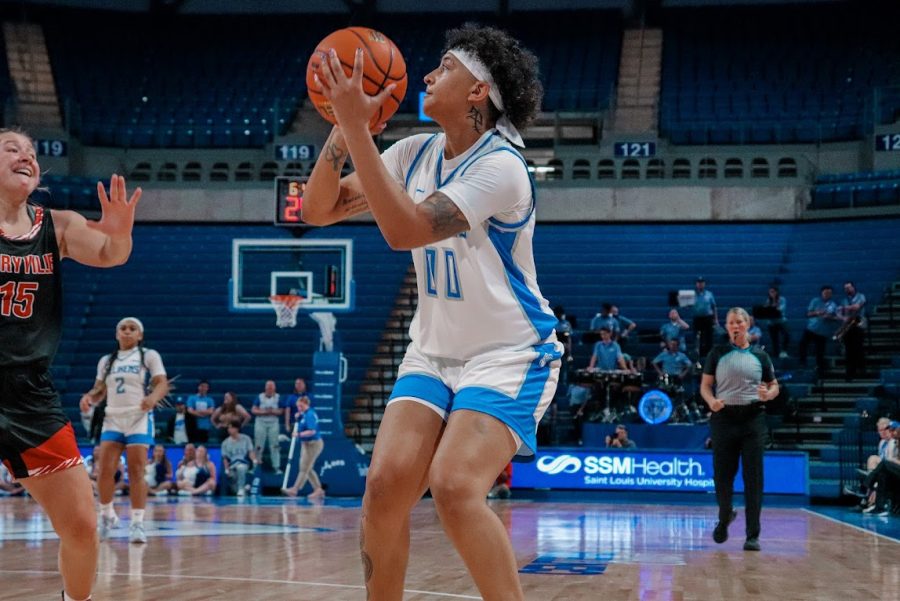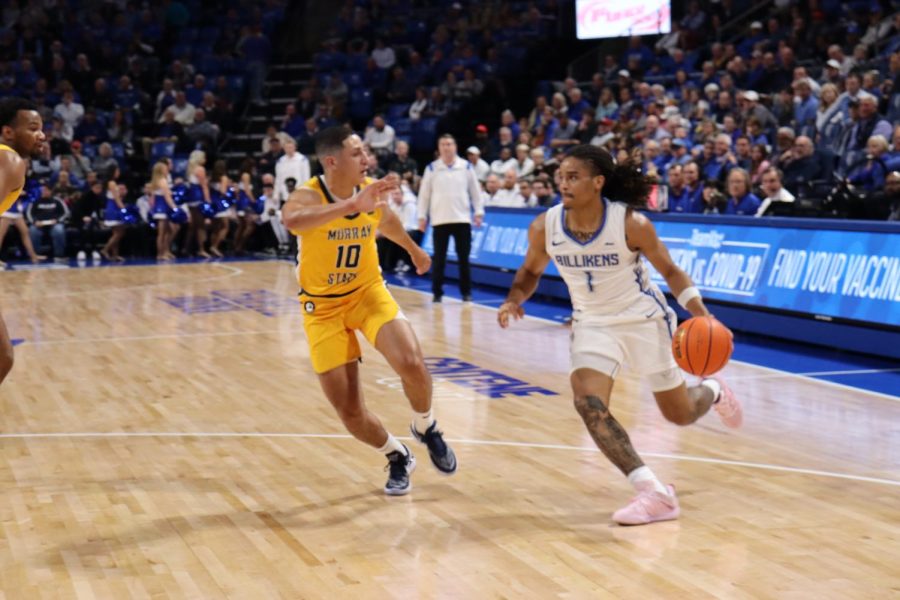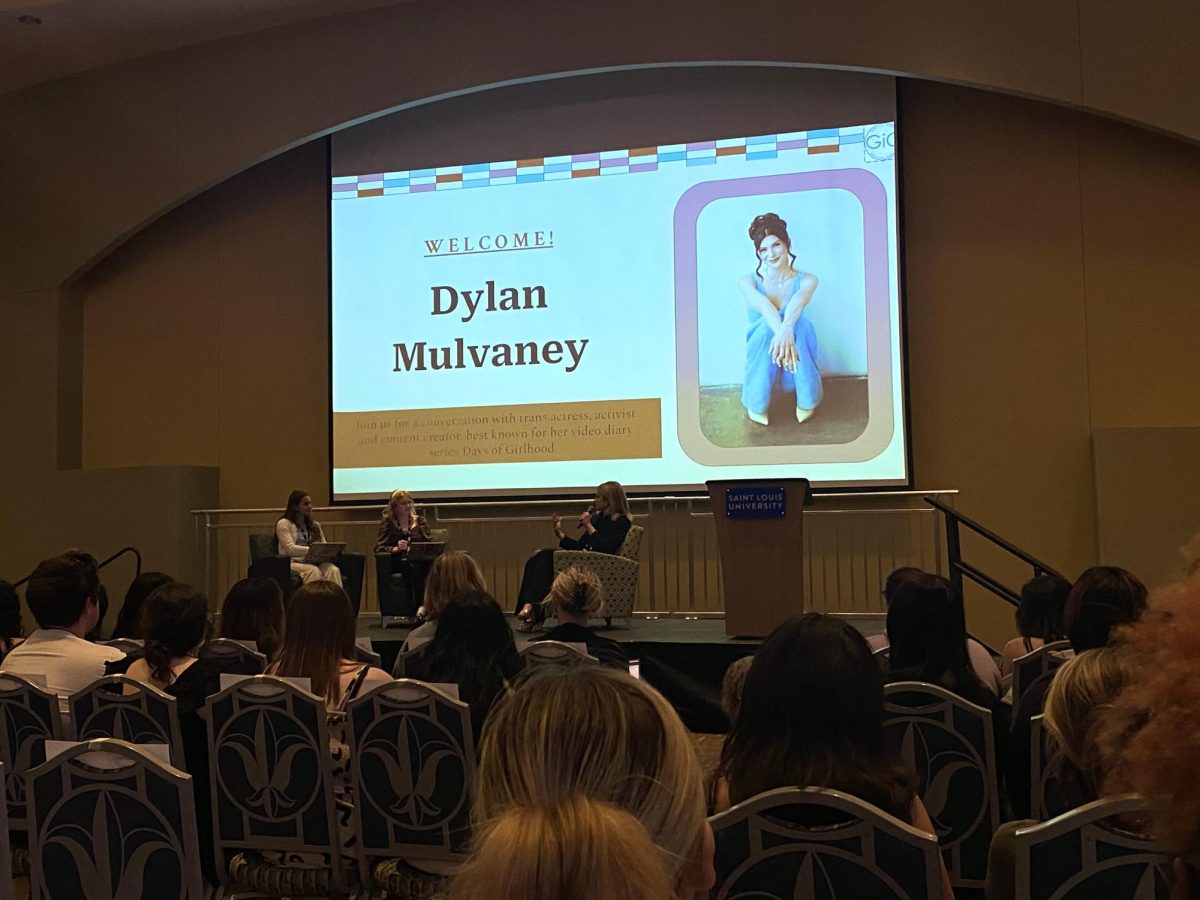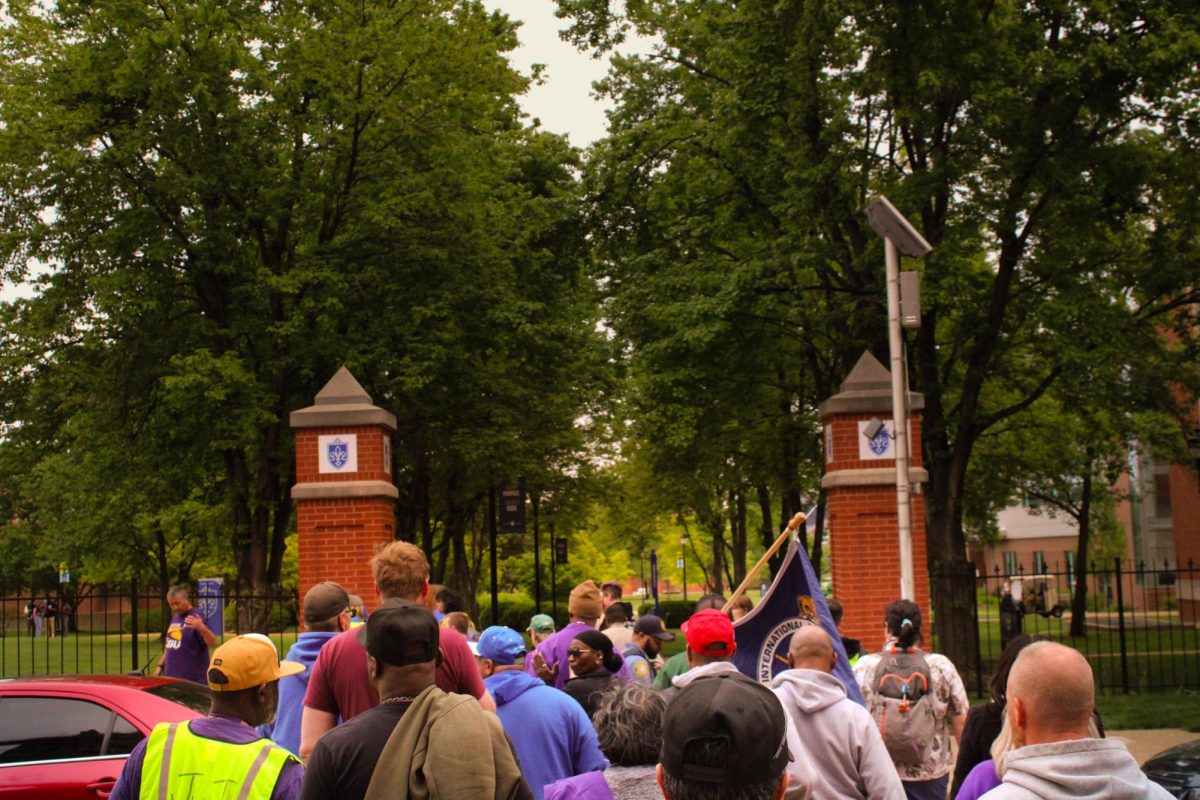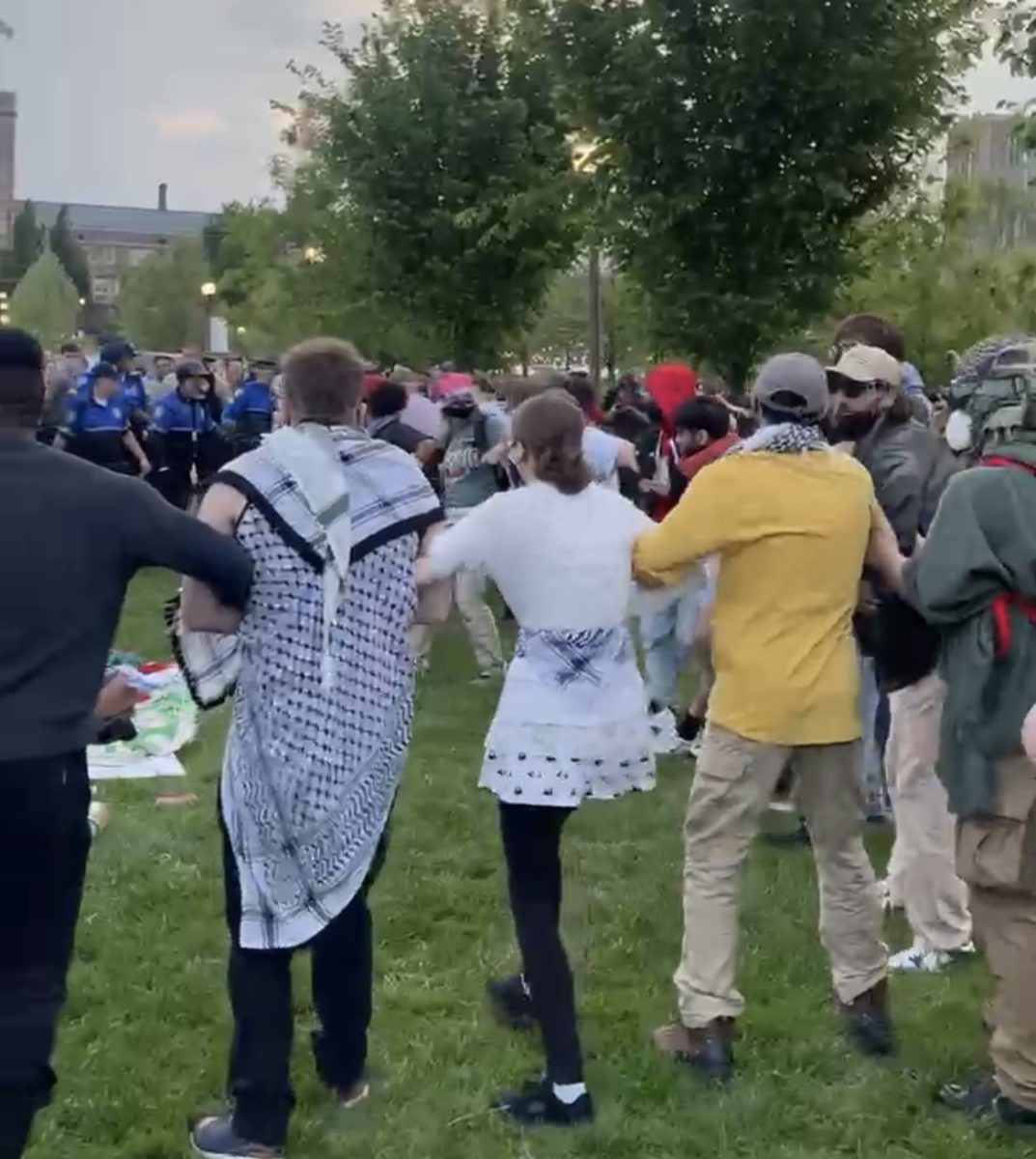Airport shuts down, over 200 homes are destroyed in storms
No one thinks it will happen to them, but on April 22, an EF4 tornado, the largest storm to hit the St. Louis area since 1967, created a path of destruction through St. Louis County in Missouri and Madison County in Illinois.
That night, Saint Louis University junior Kelsey Hayes said she joined her best friend Mary Ray Staples and her family for dinner, an invitation she usually declines.
Hayes and Staples live in Bridgeton, Mo., located near Lambert-St. Louis International Airport.
KTVI Chief Meteorologist Dave Murray said he closely tracked a severe line of storms traveling southeast across St. Charles County the night of April 22. Earlier in the week, Murray had forecasted a major weather event in the St. Louis area.
“It was time to be ready for it,” he said.
Around 8 p.m. tornado warnings were issued by the National Weather Service for St. Louis County and St. Louis City.
“The sky turned orange and the winds got really bad. You could see outside their house; three trees fell down and we were thinking that must have been the worst of it,” Hayes said. “A piece of a roof fell a foot from my car. After that, I knew I needed to get home.”
Hayes said she insisted on returning to her home and had to travel home on foot because the roads were blocked. As she neared her street, she said she couldn’t find her house because the two-story brick house was swept away in the storm.
“Almost instantly you could smell the gas leak, and I started screaming my dogs’ names,” Hayes said. “I don’t hear any barks; I don’t see any movement. I started … crying and calling my parents. My parents didn’t understand that the house was gone. It’s like it was never there.”
Down the street, SLU freshman Tigré Smith and her aunt were looking out the windows at the darkening sky.
“The power went out, and you could hardly see outside,” Smith said. “It was really loud. You could hear things hitting the house. Trees were being uprooted … I kept thinking, ‘wow, is this really happening?’ It was horrible.”
When the storm passed, Smith’s neighborhood was destroyed. Her aunt’s house was spared with only a damaged roof.
As the storm passed through northern St. Louis County, it also impacted Lambert-St. Louis International Airport. Curran Hennessey, a high school senior from East Grand Rapids, Mich., was aboard American Airlines Flight 699, from St. Louis to Chicago-O’Hare. He was traveling home after visiting Washington University in St. Louis.
Hennessey’s flight was supposed to leave Lambert around 7:30 p.m., but his flight was delayed by the storm and remained attached to the gate at Lambert’s Concourse C. When the storm hit Lambert, Hennessey said the plane was tossed twenty feet from the gate. Debris from houses and the airport hit the plane.
“It was terrorizing, having the airplane swing all over the place. I learned you can go airborne without leaving the gate. It was very surreal,” Hennessey said.
“There was debris everywhere. You think of an airport as being orderly … There was baggage everywhere, everything was in disarray. Vehicles were upside down. The runway was indescribable,” Hennessey said.
In Hayes’ neighborhood, around 20 houses were severely damaged and later condemned. All that remains of Hayes’ house were the bushes from the front yard and the deck that had been attached to the back of the house.
Hayes said because she usually doesn’t heed the warnings provided by tornado sirens, if it not been for the Staples, she would not have survived the storm.
“I grew up with the sirens, I’m used to them,” Hayes said.
Though the home is lost, Hayes said her family rescued over 300 loads of laundry from the house and her mother was able to locate her wedding band.
Hayes also experienced the power of the winds generated by the storm.
“My dad’s boss at the airport called and said they had found a picture of (me) from 1997 at a friend’s birthday party. It was plastered against a window at Lambert,” Hayes said.
“It’s a picture I wish no one would ever see, but finding these things means a lot.”
Hayes, a member of Alpha Phi Omega, received an outpouring of support from the SLU community. Vice President of Membership for APO David Gentle said the organization is planning a number of fundraisers and has established a Hayes Family Fund.
“We will be selling shirts for $12 on campus, $9 of which will go to the family,” Gentle said.
“On Mon., May 2, Humphrey’s Restaurant and Tavern will be donating 25 percent of food sales to the fund; on Tues., May 3, Laclede Street Bar and Grill will be donating 25 percent of food sales between 5-10 p.m. We have other fundraisers planned for Vito’s, Pickleman’s Gourmet Cafe and Pappy’s BBQ. We plan to announce those in fliers on campus next week.”
More than 251 residences were destroyed in the St. Louis area because of the April 22 storms, but no one was killed. KSDK Meteorologist and SLU professor Mike Roberts attributes the lack of severe injuries to early warnings.
“Considering that so much of this (storm) happened in the Metro area, the fact that no one was killed is miraculous. It speaks to the success of the lead time we have now (on these storms) as being very effective.”
According to Murray, a La Niña pattern has taken hold over the Midwest region. Typically, a La Niña year experiences more violent and more frequent tornadoes.
Outbreaks of 40 or more tornadoes are generally expected with this weather pattern. On April 22, cool Canadian air collided with warm air from the Gulf of Mexico, creating a favorable atmosphere for tornadic storms.
Murray said strong thunderstorms usually die out before they reach the St. Louis Area. Called the “Arch effect,” the air over the city is usually drier and weakens approaching thunderstorms. Since storms feed off the air 20 to 30 miles ahead of them, super-cell storms typically fade out over St. Louis County when they encounter the dry air over St. Louis City.
Around 7:20 p.m. on April 22, two smaller thunderstorms saturated the air over downtown St. Louis. These storms forced a delay in play for the St. Louis Cardinals at Busch Stadium.
Later, two super-cell storms raced across west-central Missouri. Instead of losing power, the storms gained power as they approached the St. Louis area. Murray said this was a recipe for “a pounding.”
“Mother Nature will do this from time to time; it’s something we live with here in the Midwest,” Murray said. “I love the challenge of the forecast and getting the information out, but I do not like the results.”
“I spent three hours Sunday in a war zone in St. Louis. It’s both amazing and painful.”


